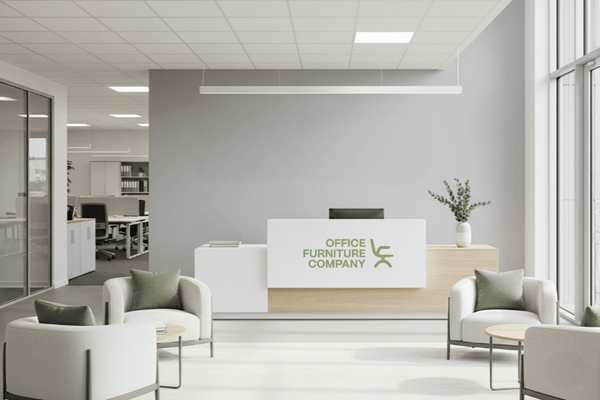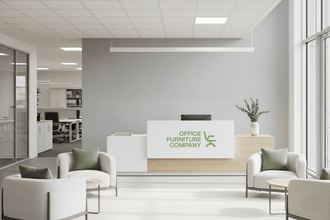
Office Desking
The Ultimate Guide to Office Desking: Elevate Your Workspace with the Perfect Desk
Creating an efficient and comfortable office environment is crucial for productivity and overall well-being. One of the key elements in achieving this is choosing the right office desk. The term office desking encompasses a wide range of desk types and styles, each catering to different needs and preferences. In this comprehensive guide, we'll explore the various aspects of office desking, from selecting the ideal desk to maintaining and organizing your workspace.
The Importance of Office Desking
An office desk is more than just a piece of furniture; it is the central point of your work environment. The right desk can enhance productivity, improve posture, and contribute to a pleasant work atmosphere. On the other hand, an ill-suited desk can lead to discomfort, decreased efficiency, and even health and back issues.
Types of Office Desks
Understanding the different types of office desks available can help you make an informed decision that suits your work style and space requirements. Here are some popular options:
1. Traditional Office Desks
Traditional office desks are the most common type, characterized by their rectangular shape and ample workspace. They often come with drawers and storage compartments, providing plenty of room for organizing office supplies and documents. These desks are ideal for those who need a spacious surface to work on and prefer a classic look.
2. L-Shaped Desks
L-shaped desks offer a large working area by combining two rectangular surfaces at a 90 degree or right angle. This design provides additional space for multitasking and can easily accommodate multiple monitors or other equipment. L-shaped desks or corner workstations are perfect for home offices and corporate environments where space utilization is critical.
3. Standing Desks
Height adjustable desks, or often known as Sit Stand Desks or Standing desks have gained popularity due to their health benefits. They allow users to alternate between sitting and standing positions, reducing the risk of sedentary-related health issues. Some models are adjustable, enabling users to switch between heights with ease. Standing desks are ideal for those who prefer flexibility and want to promote better posture and circulation.
These usually come in 3 versions:
- 1) Electric Height Adjustable Desks
- 2) Winder (manual) Height Adjustable Desks
- 3) Desk Risers
4. Executive Desks
Executive desks are larger and often more ornate, reflecting a sense of prestige and professionalism. They typically feature a substantial amount of storage and a spacious work surface, making them suitable for high-level executives and managers. Manager desks can also serve as a statement piece in a well-appointed office.
5. Compact Desks
Compact desks, also known as writing desks, are smaller and more minimalist in design. They are perfect for tight spaces or for use as secondary workstations. Despite their size, compact desks can still offer ample workspace for a laptop, writing materials, and essential office supplies.
Choosing the Right Office Desk
Office Desking involves considering several factors, including space, functionality, style, and ergonomics. Here are some key points to guide your decision:
1. Assess Your Space
Before purchasing a desk, measure your office space to determine the maximum dimensions your desk can occupy. Consider the layout of your room, including the placement of windows, doors, and other furniture. Ensure there is enough clearance around the desk for comfortable movement and access to storage.
2. Determine Your Needs
Consider your primary work activities and the equipment you use regularly. If you require multiple monitors, a larger desk with ample surface area is essential. If storage is a priority, look for desks with built-in drawers and shelves. Understanding your needs will help you choose a desk that enhances your productivity.
3. Consider Ergonomics
Ergonomics plays a crucial role in maintaining comfort and preventing strain during long work hours. Look for desks that offer adjustable heights or pair your desk with an ergonomic chair. Ensure the desk's height allows you to maintain a neutral wrist position while typing and that your monitor is at eye level to avoid neck strain.
4. Match Your Style
Your desk should complement the overall aesthetic of your office. Whether you prefer a modern, minimalist look or a more traditional design, there are office desks to suit every style. Consider the material, color, and finish of the desk to ensure it blends seamlessly with your decor.
Organizing Your Office Desk
A well-organized desk can significantly impact your productivity and efficiency. Here are some tips for keeping your workspace tidy and functional:
1. Declutter Regularly
Remove unnecessary items from your desk to prevent clutter from accumulating. Keep only the essentials within reach and store other items in drawers or shelves. Regular decluttering sessions can help maintain a clean and organized workspace.
2. Use Desk Accessories
Invest in desk accessories such as organizers, trays, and holders to keep your supplies neatly arranged. A pen holder, file organizer, and cable management system can go a long way in maintaining order on your desk.
3. Implement a Filing System
A filing system is essential for keeping documents organized and easily accessible. Use labeled folders or binders to categorize your papers and store them in drawers or a filing cabinet. This system will save you time searching for important documents and help maintain a tidy desk.
4. Personalize Your Space
Personal touches can make your workspace more enjoyable and motivating. Add a few decorative items such as plants, photos, or artwork that inspire you. However, be mindful not to overcrowd your desk, as this can lead to distractions.
Maintaining Your Office Desk
Proper maintenance of your office desk ensures its longevity and keeps it looking new. Here are some maintenance tips:
1. Clean Regularly
Dust and clean your desk regularly to remove dirt and debris. Use a soft cloth and mild cleaning solution suitable for the desk's material. Avoid harsh chemicals that could damage the surface.
2. Protect the Surface
Use desk mats or coasters to protect the desk surface from scratches, stains, and heat damage. Avoid placing heavy objects directly on the desk without proper support to prevent dents and warping.
3. Check for Wear and Tear
Periodically inspect your desk for signs of wear and tear, such as loose screws or damaged edges. Address any issues promptly to prevent further damage and ensure the desk remains sturdy and functional.
The Benefits of a Well-Chosen Office Desk
Investing in a high-quality office desk tailored to your needs can bring numerous benefits:
1. Enhanced Productivity
A spacious and organized desk provides a conducive environment for focused work. With everything you need within reach, you can complete tasks more efficiently and reduce time spent searching for items.
2. Improved Health and Comfort
An ergonomic desk setup can prevent strain and discomfort associated with prolonged sitting. Adjustable desks and proper posture support can reduce the risk of musculoskeletal issues, enhancing your overall well-being.
3. Professional Appearance
A well-designed desk contributes to a professional and polished office appearance. This can positively impact clients' and colleagues' perceptions, creating a favorable impression of your workspace.
4. Increased Motivation
A comfortable and aesthetically pleasing workspace can boost your motivation and morale. When your desk is an inviting and functional space, you're more likely to enjoy your work and stay productive.
Conclusion
Choosing the right office furniture and specially office desk is a crucial decision that can significantly impact your work environment and productivity. By understanding the different types of office desks, considering your needs and space, and implementing organization and maintenance strategies, you can create a workspace that supports your goals and enhances your overall work experience. Whether you opt for a traditional desk, a standing desk, or an executive desk, the key is to find a solution that aligns with your preferences and requirements. Invest in a quality office desk, and watch your productivity and well-being soar.
By focusing on the concept of office desking, you can transform your workspace into a haven of efficiency and comfort. Explore your options, prioritize ergonomics, and maintain an organized desk to reap the benefits of a well-chosen office desk.

About the Author
Priya Bennett is the Subject Matter Expert guiding Office Furniture Company's strategic approach to commercial fitouts. Her insights are drawn from her deep experience across diverse sectors, including government, education, and healthcare.
Recognised as the company's trusted internal voice on products, workplace design and ergonomics, Priya also serves as lead content author. She translates complex industry knowledge into practical articles and guides, establishing a key resource that empowers businesses to create more productive and healthy work environments.

















